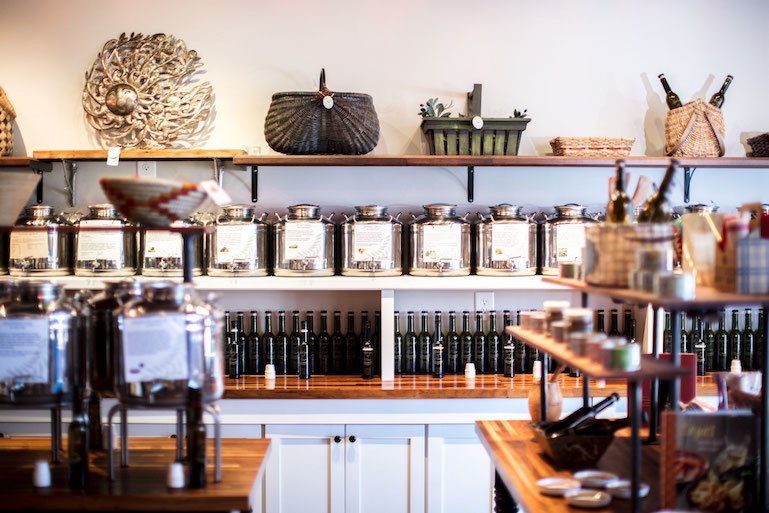
Pricing 101: How to Price a Product for Retail
As a small business owner, one of your most crucial decisions is how to price a product for retail. If you price products too high, you’ll lose buyers to your competitors.
But if your price point is too low, you could lose money, and even see your business start to stumble.
To help you avoid these issues, we put together this helpful guide. It walks you through all the aspects of how to price a product for retail, revealing the art (and science) of smart, successful pricing strategies.
Retail Pricing Objectives
Establishing your retail pricing objectives is a critical first step toward determining the optimal retail pricing for your products. Think about your goals — not just financial goals, but your strategic and marketing goals as well. Also, consider how customer expectations play a role in your pricing objectives.
Many small business owners want to maximize profits and their margin as much as possible. However, that is not the only pricing objective you should aim for. A common strategy is to lure customers away from the competition by offering matching or lower prices.
Maybe your goal is to increase your sales volume, or just trying to keep your doors open through a slow season. As your goals change, your pricing objectives may change as well. Start with your pricing objectives to help determine the pricing strategy for your products.
SEE ALSO: How to Increase Sales in Retail — The Ultimate Guide
Ways to Price a Retail Product
Pricing involves a little bit of art, a little bit of science, and a whole lot of strategy — including balancing the prices across your entire product range to achieve your goals.
The Role of MSRP
Here’s how the manufacturer’s suggested retail price (MSRP) is supposed to work. The manufacturer sets a product price that incorporates data regarding the pricing of similar products, the cost to manufacture the product, and a profit margin for both the manufacturer and the retailer. Then the manufacturer offers you, the retailer, that product at a wholesale price, traditionally half the MSRP.
This type of pricing is typically referred to as cost-based pricing or cost-plus pricing since most of the price is based on the cost to produce and sell the item. The “plus” component refers to the margin that’s created when the manufacturer adds a markup to the wholesale price.
Theoretically, if you price your product at MSRP, you’ll then make a profit. Issues occur, however, when the MSRP is higher than the market will bear or when it’s artificially manipulated to be unrealistically high (so that you can advertise a “discount”).
Keystone Pricing
With keystone pricing, the price you charge your customer is double your cost of goods sold. It’s rare that a retailer will use keystone pricing for every product they sell.
Keystone pricing is often a poor pricing strategy choice for products that don’t turn over rapidly. If your overall business strategy relies on customers expecting low prices from you, it can hurt your business in the long run. On the flip side, if you’re selling a product that is in high demand (such a limited edition item), setting the price via keystone pricing may rob you of potential profit, because you may have the potential to increase sales by opting for a higher selling price.

Bundle Pricing
With bundle pricing, you offer your customer a group of related products, features or services all for one price. Think about cable TV bundles, which include dozens of channels that average consumers might not ever use. In some cases, these bundles might also include internet service and even landline phone service.
Bundle pricing is great for retailers. It simplifies your marketing and selling strategies since you don’t have to create campaigns and promotions for individual products. Bundle prices also minimize discontent from customers.
Going back to the cable example, you might willingly pay extra for a cable bundle that includes faster internet speeds and premium channels like HBO. But if the cable company tried to sell you each of those as a separate monthly add-on, you might balk at the charges.
In this example, the bundle makes it more likely that you’ll upgrade to a higher priced package due to the greater perceived value. This increases the cable company’s revenue and your satisfaction. It’s a win-win for both retailer and merchant.
Discount Pricing
This pricing strategy is just what it sounds like. It’s when retailers sell products at a discount or sale price. Choose this strategy when you’re trying to sell high volumes of a particular product or when you need to get rid of last season’s products to make room for new merchandise.
Discount, or promotional pricing, is an excellent choice for small businesses to boost sales during slow periods, either seasonally or on a slow day of the week (“One Day Sale!”). You can also offer discounts to specific categories of customers (students, seniors, first-time buyers) or as an incentive to loyal customers. However, be careful not to overuse this strategy, since you may condition customers not to buy until you announce a sale.
Loss-leading Pricing
Loss-leading pricing, or loss-leader pricing, is when you deliberately price certain products below your own cost with the goal of attracting customers to your shop. If you run a coffee shop, you might offer certain pastries for 50 cents each to bring in customers, knowing that most of them will spend far more than 50 cents when they order a fancy coffee drink. They might even pay more than usual for a fancier coffee since they saved money on their pastry. Loss-leader pricing is often part of a deliberate strategy to woo customers from your competitors.
Below Competition Pricing
Undercutting your competitors’ prices can seem like a good strategy at first. But what happens if your competitor cuts their prices in turn? Now you’re in a price war — and that can be harmful to everyone involved if it goes on too long. You also run the risk of attracting customers who will only patronize your business if you maintain below-market-value pricing, which is also detrimental to your bottom line.
Above Competition Pricing
Above-competition pricing sounds like a dream pricing strategy. Charge more than everyone else for the same merchandise and reap bigger profits. It only works in specific situations, though. If you provide a premium environment that makes customers happy to pay higher prices, or if you have a recognizable brand that people will pay big bucks for (think of jewelry from Tiffany), this strategy is available to you.
This approach relates to value-based pricing because the product is priced in part based on the value it delivers to consumers. In the jewelry example above, consumers will pay more for a Tiffany bracelet because wearing it carries a sense of prestige and can boost self-esteem or self-perception. The product may not be superior, but its premium nature makes it more valuable to the consumer, allowing the retailer to charge a higher price.
Anchor Pricing
Anchor pricing works when you establish a price that a product is ostensibly worth. This strategy is primarily used with products and in industries where negotiation is common. The objective is to set a starting price in the consumer’s mind. Typically, this price is higher than the amount you want to sell the product for. This allows you to do two things:
- Allow the customer to negotiate down the price, making them think they’re getting a deal, and in the process, increase the likelihood that they make a purchase.
- You can also introduce an alternative product that might be priced lower but has a more significant profit margin than the original product. The customer thinks they’re getting a deal and you benefit from selling a more profitable project.
A typical example of anchor pricing in action is when purchasing a car. Think of the initial price of a used car as the anchor price before the bargaining begins.
What’s the Best Way to Price Products for Your Retail Small Business?
With all these strategies available for retail pricing, which is the best for you? Just by reading through the descriptions of these strategies, you can probably cut several off the list as you work through your pricing. The truth is that there’s probably no single pricing strategy that will work for all of your products. You’ll want to experiment with a few different ones to find the combination that works best for your products and your market. However, to truly take your pricing strategy to the next level, you’ll want to employ a concept called intelligent pricing.
Intelligent pricing strategies leverage market data to optimize your prices, updating as the market changes to remain competitive. That focus on the market price of your products ensures that you don’t throw away potential profit: for example, if you’re able to acquire inventory at far below market value.
Start by researching how your products are priced throughout your market. With this information, you can walk the tightrope of setting your own prices, while carefully balancing the desire to make more profit and the quest for higher sales figures. Understanding your own profit margins in light of the prevailing marketplace can help you price wisely.
SEE ALSO: Use Intelligent Retail Pricing for the Profit Boost You Need
Factors Governing Markup
Traditionally, many retail products have been marked up 100% (the keystone pricing strategy above). Do some research to see if keystone pricing is standard in your industry before you lock in this markup, however, so that you don’t get stuck with inventory you can’t move (or leave money on the table). Adjust your markup to factor in your hoped-for profit margins and the demand for the product in question. In some cases, such as pharmaceuticals, the government may set a maximum retail price on products, which you also have to factor into your pricing equations.
Retail Pricing Tools
Fortunately, you don’t have to crunch all the numbers and variables involved in retail pricing on your own. A variety of retail pricing software is available to help you make smart decisions. As you choose your pricing tools, look for features that speak to your unique business. For instance, if you’re a boutique, a tool that helps you manage your markdown model is particularly useful. A convenience store or specialty grocery store might want a tool that can incorporate seasonal items and frequent price changes. Look for the ability to reject price recommendations and incorporate loyalty programs.
Point of Sale (POS) System
Your point of sale system is also a key player in helping you price products well. It collects the data you need to help you track your best-sellers and your returns, while also providing you with sales reports that generate profit margin data and measure how effective your pricing strategies are.
Even better is point of sale software that gives you access to all of your sales and inventory data no matter where you are. As a small business owner, you may want to crunch numbers once you get home or while on a business trip. If all that data is stuck on an in-store terminal that you can’t access, it doesn’t do you much good. Instead, you want a point of sale system that lets you see real-time data at any moment right from your smartphone, tablet, or laptop.
The Right Price
For many small businesses, smart product pricing is the key to growth and sometimes even to survival. By studying the various retail pricing strategies and taking advantage of the data available through a state-of-the-art point of sale system, you can make the wise choices that keep your profit margins healthy and your returning customers happy.
Want to try ShopKeep for yourself?
Just answer a few easy questions.
Need help finding the right point of sale?
Just complete the form. We’ll call you right back to explain how ShopKeep can work for you.
Hit the ground running.Sprinting, in fact!
Read our free, comprehensive guide, Small Business 101, to learn all you need to know about starting a thriving business.

